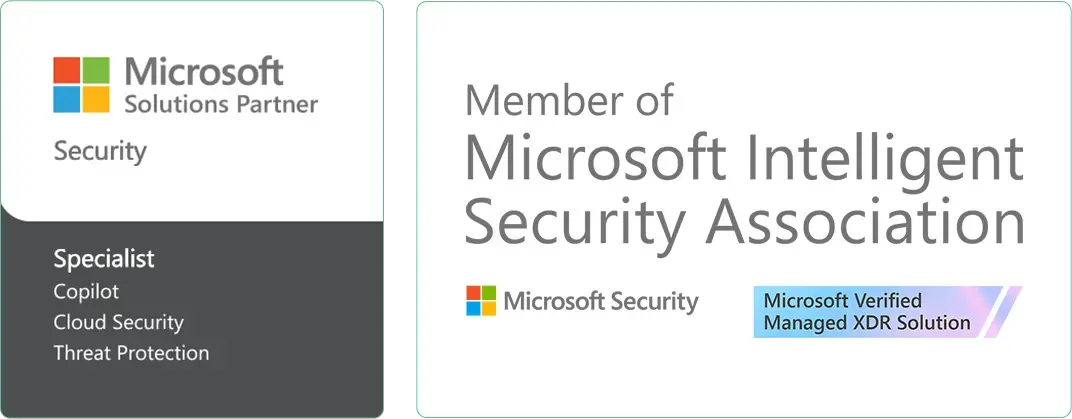Your Data, Organized &
Under Control
With strong data governance in place, you know exactly what data you have, where it lives, who’s using it, and if it meets compliance. That confidence enables your team to make faster, smarter decisions that fuel your competitive advantage.
ProArch’s Data Governance services put in place the strategy and guardrails to ensure your data remains accurate, secure, and accessible throughout its entire lifecycle.
Data Governance Is Non-Negotiable When
Your Data is Disconnected
Siloed, inconsistent data makes it hard to trust insights. Governance establishes a single source of truth.
You’ve Gone Cloud-First
Tools like Microsoft 365 make data more accessible but also harder to audit. Data governance reins it in.
You’re Scaling AI Initiatives
AI needs quality, organized data. Governance ensures your data is ready for intelligent decisions.
Compliance Is Getting Complex
Stricter regulations demand control and visibility. Governance keeps your data compliant & audit ready.
ProArch's Data Governance Services
Master Data Management
We clean up redundant or outdated data, enforce retention policies, define data sets, and establish consistent processes for data throughout the lifecycle.
Data Stewardship
Define clear roles and responsibilities within each data domain, ensuring the right people are accountable for how data is managed, shared, and protected.
Data Quality
It’s your people who ultimately drive success. We put in place quality rules, success metrics, and alerting to ensure data is trusted and usable across your organization.
Data Security
We safeguard your data from threats and unauthorized access with encryption, identity and access controls, firewalls, and endpoint protection.
Data Protection
We identify where sensitive data resides, assess regulatory and business risks, and implement data protection strategies that are reliable, repeatable, and audit-ready.
Metadata Management
Get transparency into what data you have, where it lives, and how it’s used with a data catalog, data classifications, data lineage tracking, and a clear data dictionary.
Data Product
We transform raw data into trusted, governed data products that empower your teams to make confident, data-driven decisions.
Acceptable Use Policies
We develop clear, enforceable acceptable use policies that guide how your data is handled throughout its entire lifecycle from creation to disposal.
Modernize Your Data Governance with Confidence
How We Build Data Governance That Actually Sticks
Governance doesn’t happen all at once. We take a phased approach centered around high value use cases to build momentum, drive adoption, and avoid governance fatigue.
Governance Business Driver
We identify where governance will deliver the most impact whether it’s compliance, data quality, or risk.
Assign Ownership
Clear roles and responsibilities are established to drive adoption and accountability.
Operationalized Governance
With tools, processes, and training, your teams are empowered to handle data confidently and efficiently.
Helping You Take Control of Your Data
Deep Expertise in Microsoft Purview
And across the Microsoft ecosystem.
Learn moreData Governance Experience Across Regulated
Healthcare | Insurance | Government Contractors | Finance

Data Governance FAQs
What are the 4 areas of data governance?
The four foundational pillars of data governance are:
- Data Quality: Ensuring data is accurate, complete, consistent, relevant, and timely.
- Data Stewardship: Assigning clear roles and responsibilities for data ownership and accountability.
- Data Protection and Compliance: Safeguarding sensitive data and ensuring alignment with regulatory requirements.
- Data Management: Overseeing the entire lifecycle of data from collection and storage to processing, distribution, and disposal.
How does ProArch’s data governance service differ from internal “doing it yourself”?
ProArch’s approach stands out by offering:
- Phased Implementation: Avoids “boil-the-ocean” rollouts by focusing on high-value use cases first, building momentum and adoption gradually.
- Expert-Led Strategy: Backed by decades of experience, ProArch provides tailored governance frameworks, templates, and sprint-based roadmaps to ensure scalability and alignment across departments.
- Tool-Agnostic Enablement: Rather than pushing tools prematurely, ProArch emphasizes people, ownership, and process first—then layers in technology as needed.
- Audit-Ready Compliance: Governance policies are designed to be repeatable, reliable, and audit-friendly, reducing risk and improving regulatory posture.
What phases or steps are involved in a data governance initiative?
ProArch typically follows a three-phase model:
- Assess: Discovery sessions to identify key data domains, business objectives, and compliance needs.
- Build: Define business rules, create ETL pipelines, and implement governance practices.
- Deploy: Operationalize governance with dashboards, templates, and training.
How do you measure success of a governance implementation? What KPIs or metrics should we track?
Key metrics include:
- Data Quality Scores: Accuracy, completeness, consistency.
- Governance Adoption: Number of domains with assigned stewards and documented policies.
- Compliance Readiness: Audit pass rates, policy adherence.
- Operational Efficiency: Reduction in time spent reconciling reports or cleaning data.
- Business Impact: Improved forecasting, decision-making, and care delivery outcomes.
What level of effort, time, or cost should we expect to allocate?
Effort and cost vary by scope. Remember that a core element of data governance is your people. Data governance can’t be bought. This initiative will likely be a cultural shift for your organization and requirement an investment in training.
Costs include consulting hours, optional tooling licenses, and internal resource allocation. ProArch helps estimate ROI and optimize licensing to avoid over-purchasing.
What kind of tools or platforms do you use / integrate with? Do we need to license additional software?
ProArch integrates with:
- Microsoft Purview: For data cataloging, classification, and lineage tracking.
- Power BI / Tableau: For governance dashboards and reporting.
- Azure Information Protection: For policy enforcement and data security.
- Custom-built tools: When off-the-shelf solutions don’t meet unique needs.
Licensing needs depend on your current stack. ProArch helps assess gaps and avoid unnecessary purchases.
Which regulatory or compliance frameworks do you support?
ProArch’s governance solutions are designed to align with:
- PCI
- HIPAA
- NERC CIP
- CMMC
- NIST
- GDPR
- State-specific privacy laws (NYS DFS, NY SHIELD Act)
- And more
Which tool is used for data governance?
Tool selection is based on your environment and goals—ProArch helps evaluate and implement the right mix. As a top Microsoft Partner, most of our data governance engagements utilize Microsoft Purview and other Microsoft security tools.
What are the two types of data governance models?
The two primary models are:
- Centralized Governance: A single authority manages policies and decisions. Offers consistency but less flexibility.
- Decentralized Governance: Multiple autonomous teams manage their own data. Offers agility but can be harder to standardize.
Many organizations adopt a Hybrid Model, balancing centralized oversight with distributed ownership.


